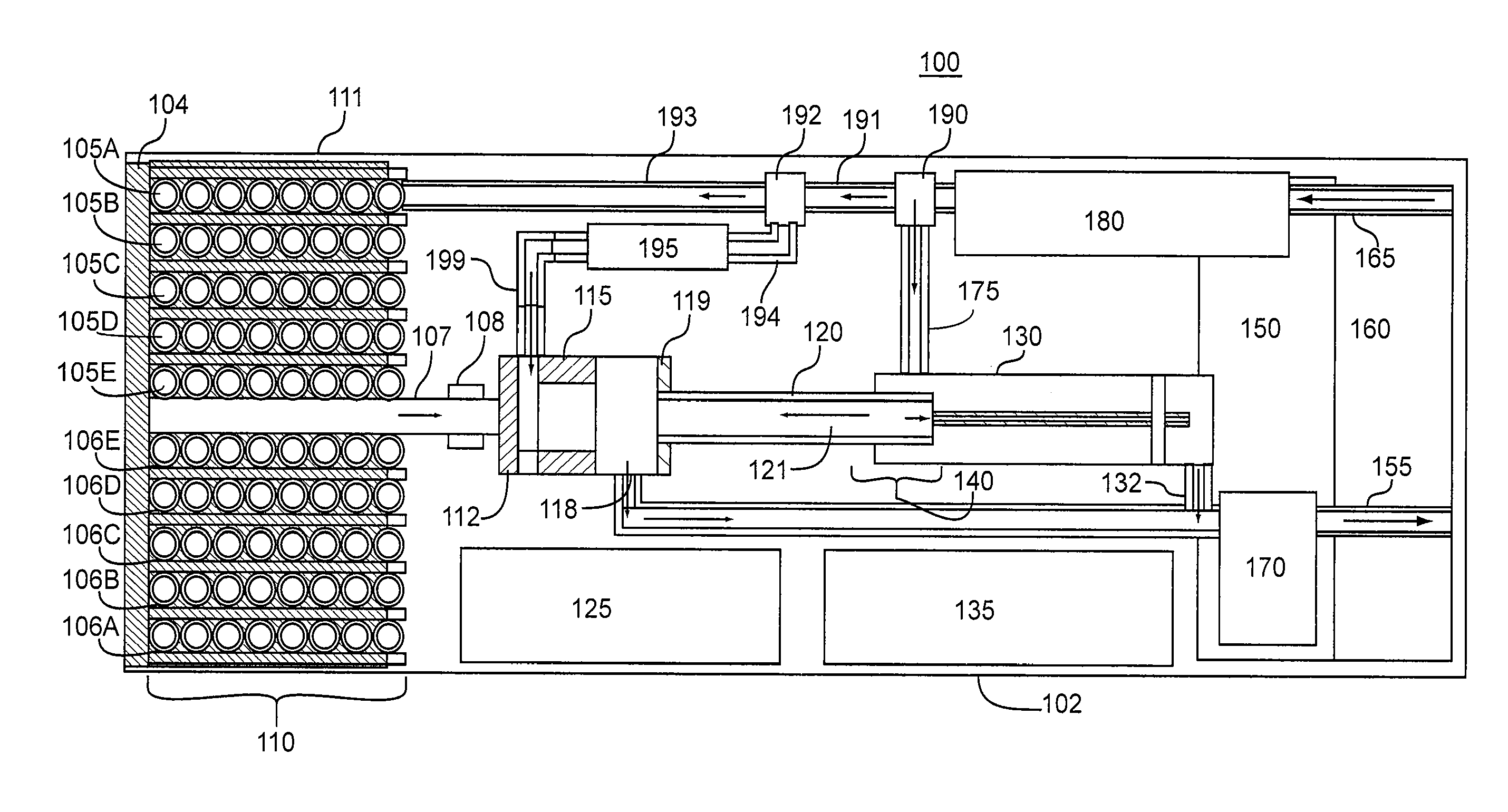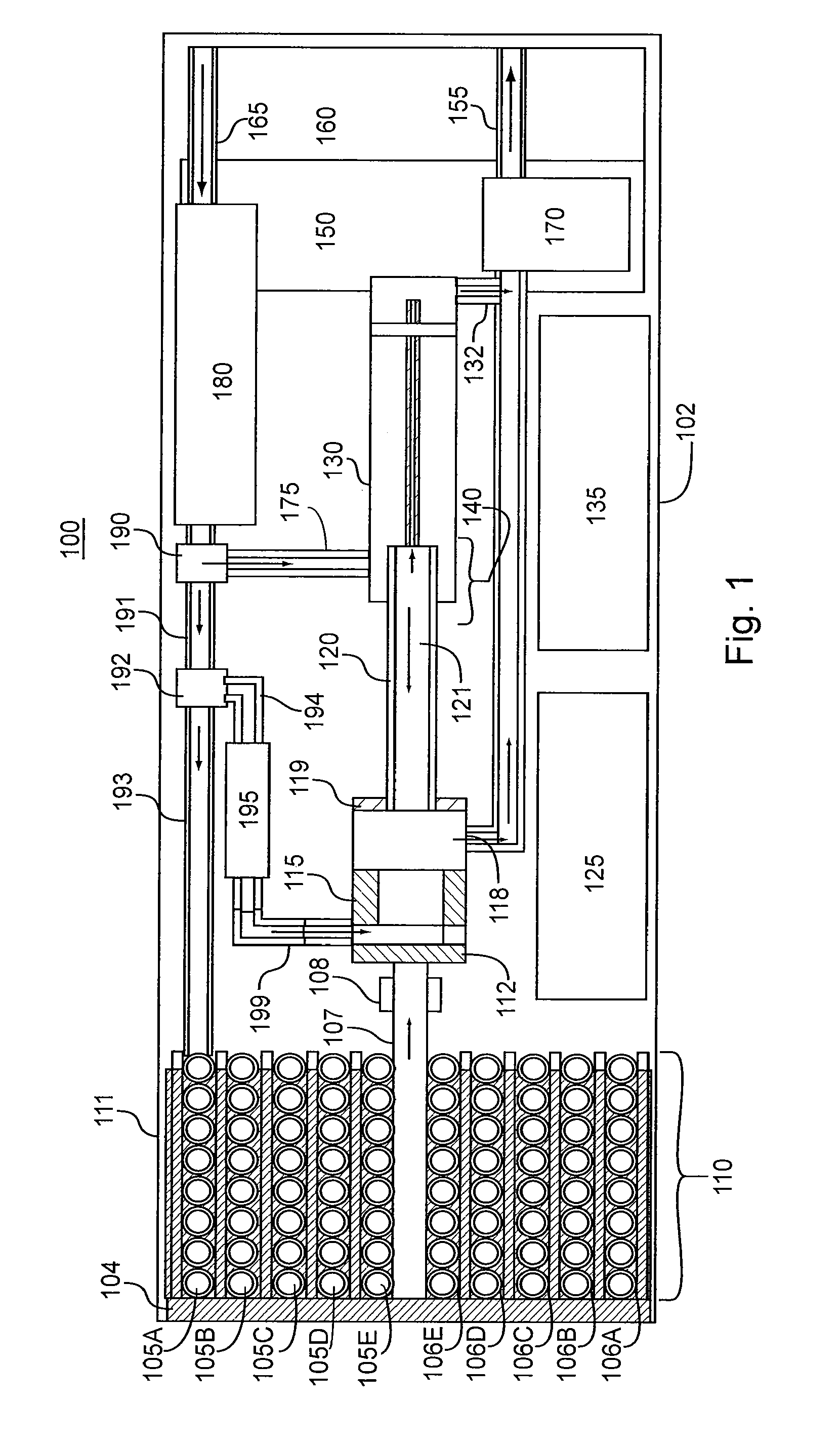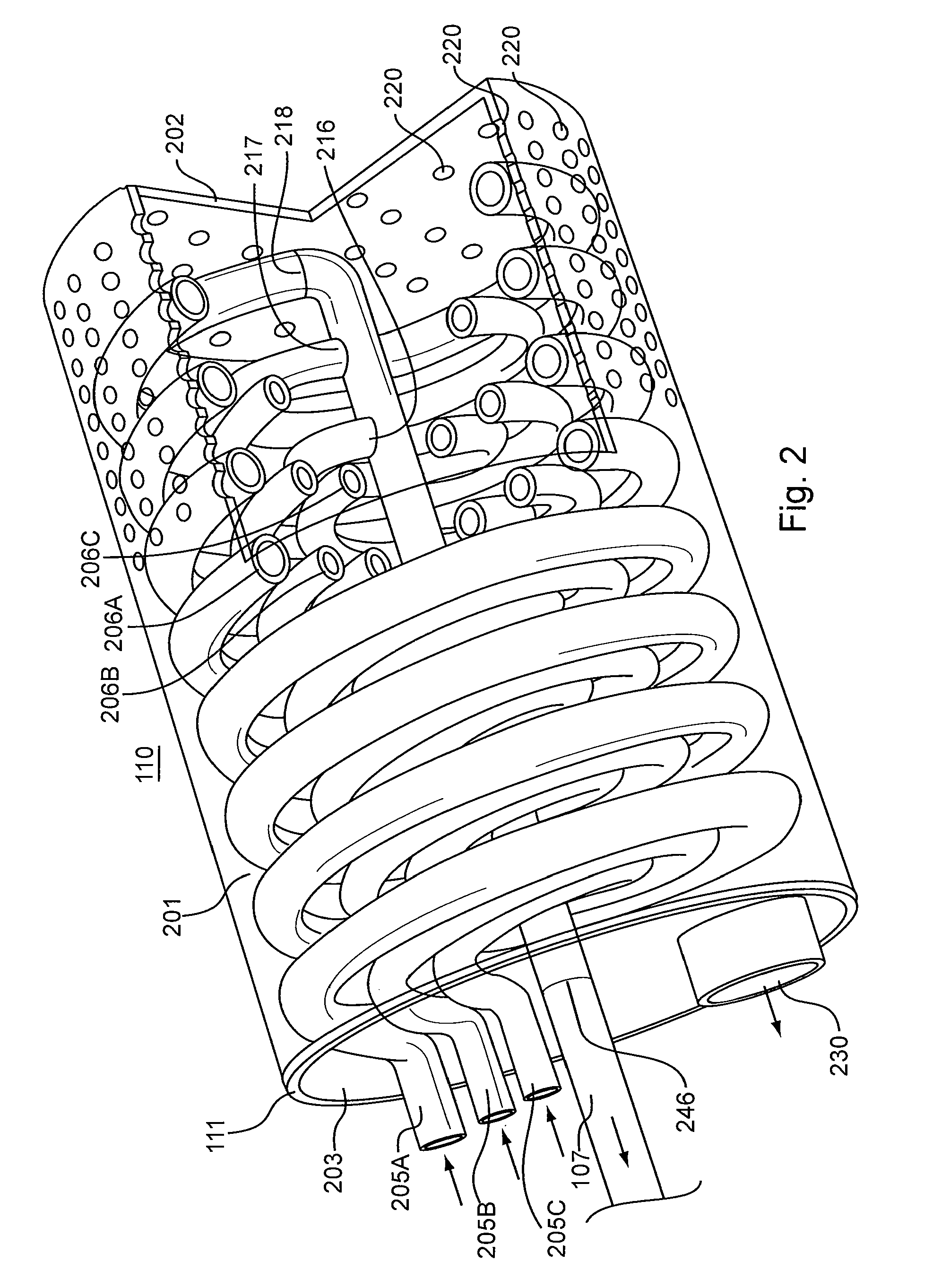Ion mobility sensor system
a technology of mobility sensor and ion, which is applied in the field of ion mobility sensor system, can solve the problems of labor intensive sampling, large time consumption, and expensive laboratory analysis, and achieve the effects of improving resolution and contaminant identification, improving the monitoring of chlorinated hydrocarbons, and facilitating the movement of ions
- Summary
- Abstract
- Description
- Claims
- Application Information
AI Technical Summary
Benefits of technology
Problems solved by technology
Method used
Image
Examples
Embodiment Construction
[0036]Except where otherwise indicated, like numbered components in one or more figures are generally constructed in a like manner and generally operate in a like manner.
[0037]FIG. 1 shows a schematic view of a first embodiment of an ion mobility sensor system 100 in accordance with the present invention. Described generally, in this embodiment, a fluid, which is usually a carrier gas, enters the ion mobility sensor system 100 through channel 165 and is moved indirectly by a flow controller, such as pump 170, via the closed channel system including channels 175, 191, 193, 194, and 199, through a dryer 180, a first flow control unit 190, a channel 191, a second flow control unit 192, and a channel 193 into filters 105A-E of extraction sampler 110. Each filter 105A-E is constructed of a permeable membrane 106A-E. Extraction sampler 110 includes a chamber 111 in communication with a sample substance 104, which is often groundwater. Contaminants in the sample substance 104 permeate thro...
PUM
 Login to View More
Login to View More Abstract
Description
Claims
Application Information
 Login to View More
Login to View More - R&D
- Intellectual Property
- Life Sciences
- Materials
- Tech Scout
- Unparalleled Data Quality
- Higher Quality Content
- 60% Fewer Hallucinations
Browse by: Latest US Patents, China's latest patents, Technical Efficacy Thesaurus, Application Domain, Technology Topic, Popular Technical Reports.
© 2025 PatSnap. All rights reserved.Legal|Privacy policy|Modern Slavery Act Transparency Statement|Sitemap|About US| Contact US: help@patsnap.com



